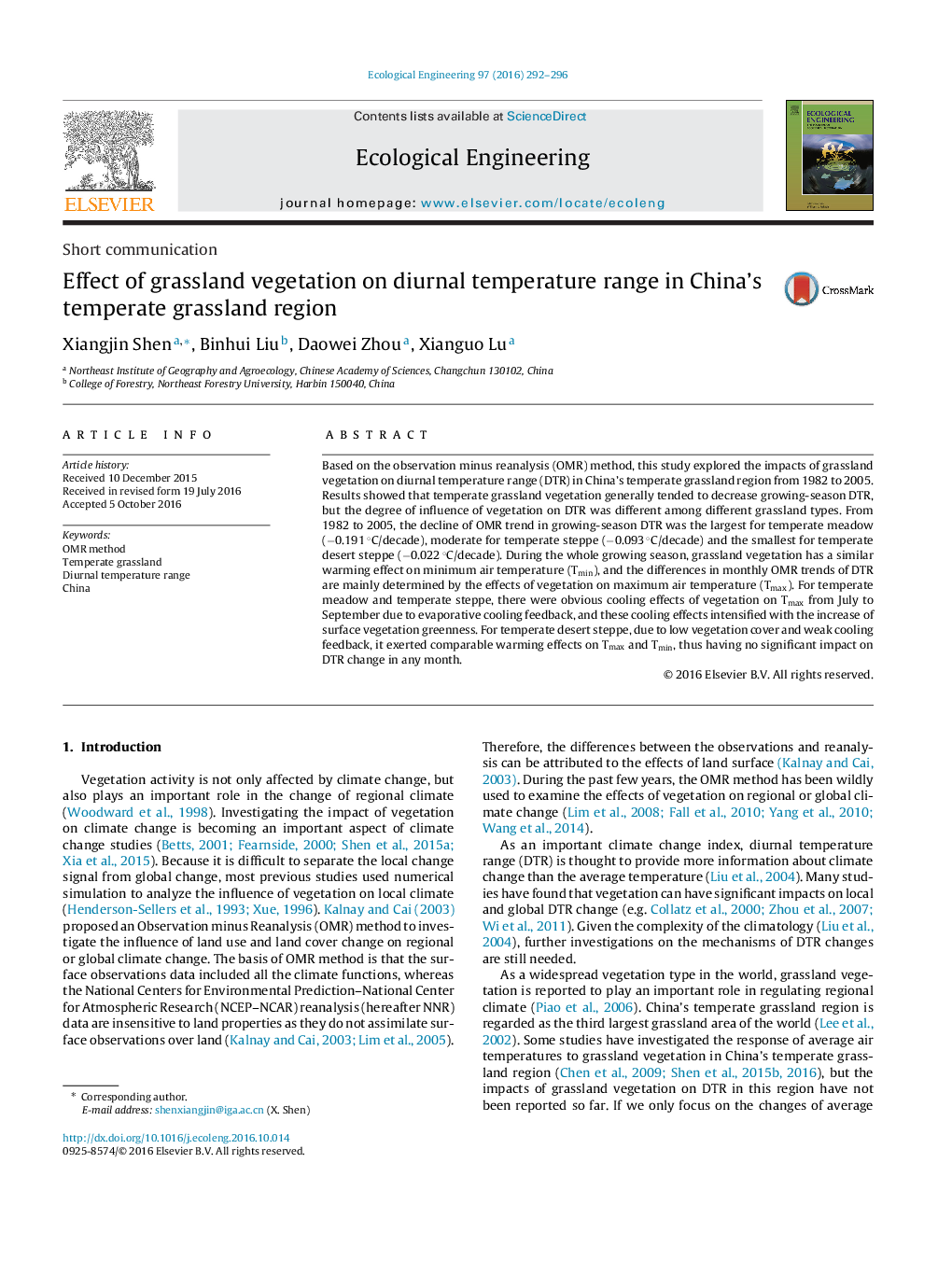| Article ID | Journal | Published Year | Pages | File Type |
|---|---|---|---|---|
| 4388388 | Ecological Engineering | 2016 | 5 Pages |
Abstract
Based on the observation minus reanalysis (OMR) method, this study explored the impacts of grassland vegetation on diurnal temperature range (DTR) in China's temperate grassland region from 1982 to 2005. Results showed that temperate grassland vegetation generally tended to decrease growing-season DTR, but the degree of influence of vegetation on DTR was different among different grassland types. From 1982 to 2005, the decline of OMR trend in growing-season DTR was the largest for temperate meadow (â0.191 °C/decade), moderate for temperate steppe (â0.093 °C/decade) and the smallest for temperate desert steppe (â0.022 °C/decade). During the whole growing season, grassland vegetation has a similar warming effect on minimum air temperature (Tmin), and the differences in monthly OMR trends of DTR are mainly determined by the effects of vegetation on maximum air temperature (Tmax). For temperate meadow and temperate steppe, there were obvious cooling effects of vegetation on Tmax from July to September due to evaporative cooling feedback, and these cooling effects intensified with the increase of surface vegetation greenness. For temperate desert steppe, due to low vegetation cover and weak cooling feedback, it exerted comparable warming effects on Tmax and Tmin, thus having no significant impact on DTR change in any month.
Related Topics
Life Sciences
Agricultural and Biological Sciences
Ecology, Evolution, Behavior and Systematics
Authors
Xiangjin Shen, Binhui Liu, Daowei Zhou, Xianguo Lu,
